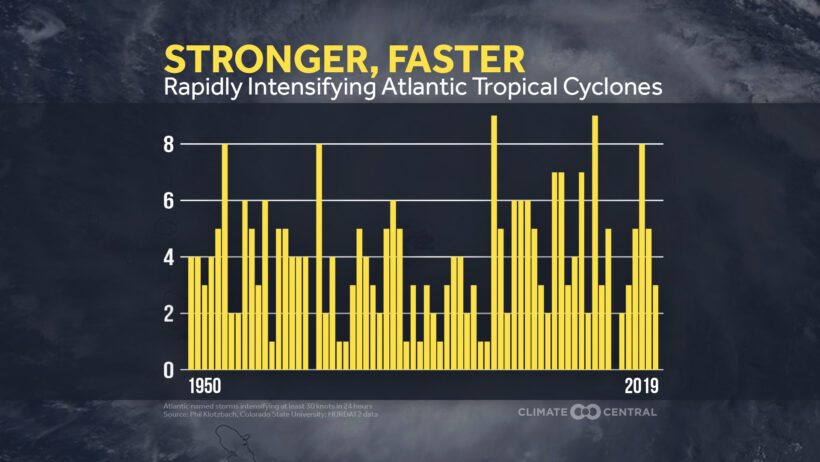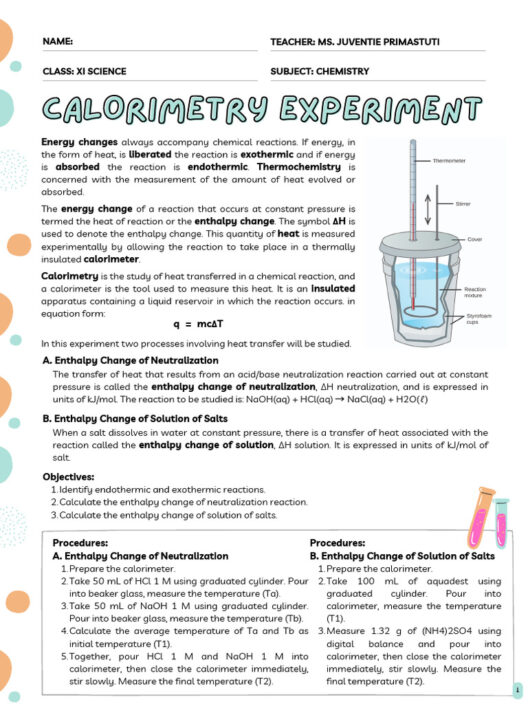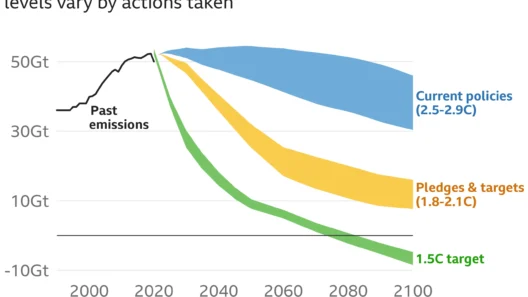Hurricanes are awe-inspiring yet devastating natural phenomena. Their ability to unleash immense power—sustaining winds surpassing 157 mph and fury that can obliterate cities—is both fascinating and terrifying. But within this conundrum of beauty and destruction lies a more pressing concern: the influence of anthropogenic climate change on the formation and intensity of these storms. This intricate relationship has garnered increasing attention as scientists strive to understand the complexities of hurricane dynamics in a warming world.
Understanding hurricanes begins with their formation. These storms typically originate over warm ocean waters where sea surface temperatures exceed 26°C (about 79°F). The heat from the water evaporates, rising into the atmosphere, saturating it with moisture. When atmospheric conditions are conducive—characterized by low vertical wind shear and a moist environment—this rising warm air begins to rotate due to the Coriolis effect, eventually giving birth to a tropical cyclone. This natural process has existed for millennia, yet the consequences have evolved as global temperatures continue to rise.
As global warming accelerates, ocean temperatures also increase. The Intergovernmental Panel on Climate Change (IPCC) estimates that the world’s oceans have warmed by approximately 0.6°C (1.1°F) since the late 19th century. This seemingly modest rise has significant ramifications. Warmer oceans provide more energy for storms, leading to higher intensity. Studies reveal that Category 4 and 5 hurricanes have increased in frequency, affirming a disturbing trend fueled by climate change. The consequences of such storms are catastrophic; infrastructure is devastated, lives are lost, and recovery efforts become increasingly arduous in the face of governmental unpreparedness.
Moreover, climate change does not merely amplify storm intensity; it influences storm tracks and formation rates as well. Researchers have observed a trend of hurricanes forming more frequently in certain regions, particularly in the Atlantic Ocean. One major contributing factor is the alteration of atmospheric circulation patterns, such as the weakening of the Atlantic Meridional Mode (AMM), which influences hurricane formation locations. The interplay of these multifaceted elements illustrates an era where human-induced climate change is not simply amplifying natural disasters—it is reshaping them.
Further complicating matters is the phenomenon of intensifying rainfall. As the atmosphere warms, it can hold more moisture; for every degree Celsius increase, the air’s capacity to retain water vapor rises by about 7%. Consequently, when hurricanes strike, they are equipped, not just with stronger winds, but also with the potential for catastrophic rainfall. The storms of recent years bear witness to this trend, with deluges leading to unprecedented flooding in regions that previously enjoyed relative safety. The devastation wrought by Hurricane Harvey in 2017, for instance, exemplifies the lethal combination of hurricane strength and excessive rainfall, pushing recovery efforts to the brink.
Despite the gravity of the phenomenon, public perception of hurricanes is often clouded with a certain complacency. There exists a curious human tendency to romanticize storms as if they are mere spectacles of nature rather than harbingers of devastation. This disconnect is alarming, particularly as extreme weather events become more frequent. It reflects a need for a paradigm shift in how society perceives and prepares for hurricanes. Education and awareness are pivotal in understanding the profound implications of climate change on these natural disasters. Communities must recognize that the intensity of storms is not only a physical reality but also a consequence of anthropogenic influences.
Prediction models have progressively advanced, offering valuable insight into future hurricane activity. However, forecasting remains fraught with uncertainty. As climate change continues to evolve, existing models must be adapted to encompass new variables. Oceanic interactions, atmospheric dynamics, and local geographic features complicate predictions, making it crucial for scientists to undertake robust, interdisciplinary research. Enhanced predictive capabilities are imperative, as early warning systems save lives and mitigate economic losses.
To stem the tide of intensifying hurricanes, global cooperation and concerted action are paramount. Policymakers must recognize the urgency of climate change, employing strategies that focus on mitigation and adaptation. Transitioning away from fossil fuels, enhancing energy efficiency, and investing in renewable resources are vital steps toward reducing greenhouse gas emissions. Moreover, communities must engage in resilient planning, fortified infrastructure, and sustainable land use to weather the impending storms spurred by climate change.
In conclusion, hurricanes serve as a dramatic reminder of nature’s grandeur and volatility, epitomizing the intricate relationship between atmospheric conditions and oceanic warmth. As climate change continues to warp these natural systems, the need for proactive measures escalates. The stewardship of our planet demands collective responsibility—not merely as an environmental obligation but as an infusion of morality within the existential framework of humanity’s future. By addressing the underlying causes of climate change, society can work towards a more predictable, manageable relationship with these formidable storms. They are not merely acts of nature but reflections of the world we continue to shape through our actions—or inaction.








